Home>Interior Design>How To Clean Blinds: Expert Ways To Make Them Pristine
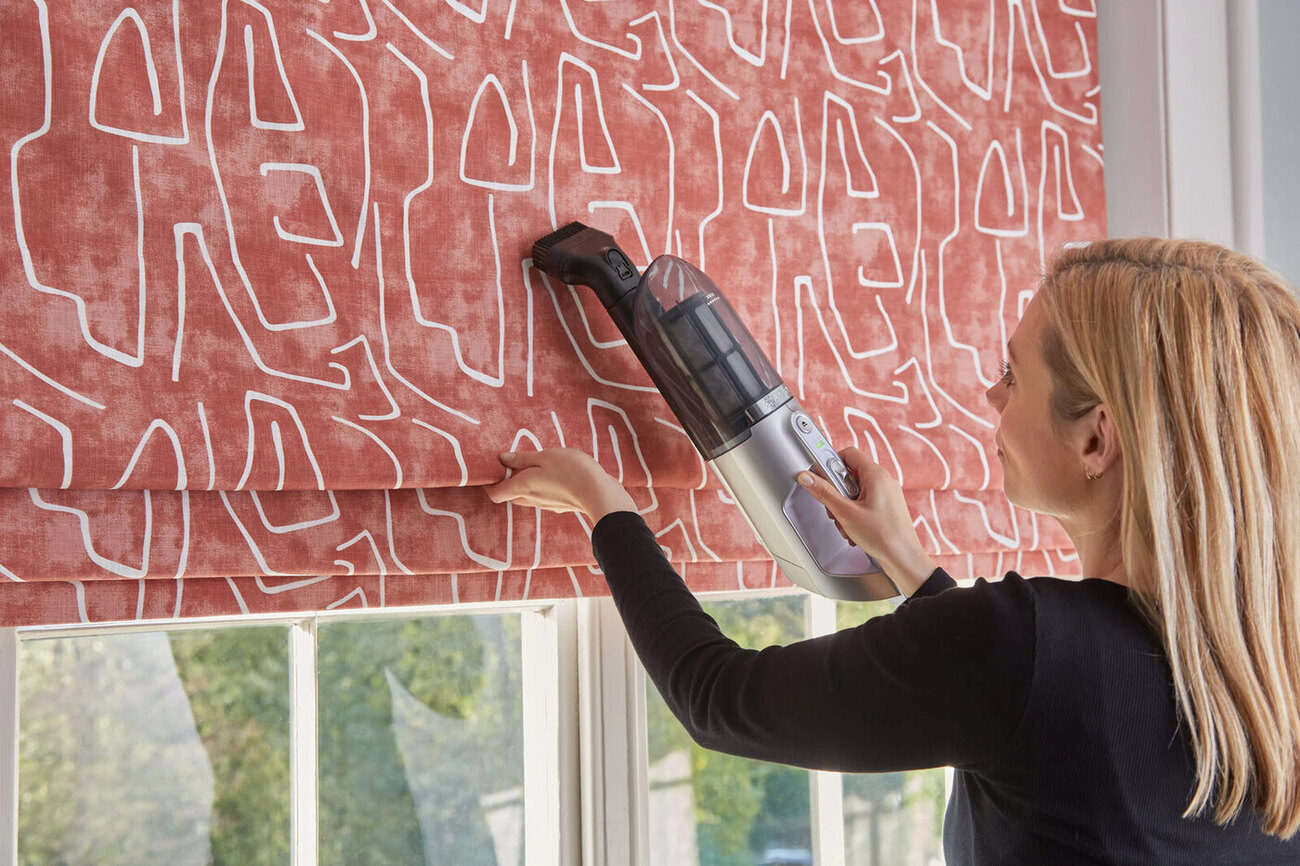

Interior Design
How To Clean Blinds: Expert Ways To Make Them Pristine
Modified: January 9, 2024
Learn the best techniques from interior design experts on how to clean blinds and bring back their pristine condition. Achieve a spotless home with our expert tips.
(Many of the links in this article redirect to a specific reviewed product. Your purchase of these products through affiliate links helps to generate commission for Storables.com, at no extra cost. Learn more)
Introduction
Blinds are a stylish and functional addition to any interior design, providing privacy, light control, and aesthetic appeal. However, over time, they can accumulate dust, dirt, and grime, making them look dull and unattractive. That’s why it’s essential to keep your blinds clean and well-maintained.
Cleaning blinds may seem like a daunting task, but with the right techniques and tools, you can make them pristine and enhance the overall appearance of your space. In this article, we will guide you through expert ways to clean different types of blinds effectively.
Before we delve into the cleaning process, let’s explore why cleaning blinds is important.
Key Takeaways:
- Regularly cleaning blinds is crucial for maintaining a healthy indoor environment, extending their lifespan, and ensuring optimal functionality, contributing to an aesthetically pleasing living space.
- Different types of blinds require specific cleaning techniques and precautions to prevent damage and maintain their pristine appearance. Regular maintenance and prompt stain cleaning are essential for long-term durability.
Why Cleaning Blinds is Important
Regularly cleaning your blinds offers numerous benefits, both aesthetically and for the health and hygiene of your indoor environment. Here are a few reasons why it’s essential to keep your blinds clean:
- Enhanced Indoor Air Quality: Dust, allergens, and pet dander can accumulate on blinds over time, leading to poor indoor air quality. Cleaning your blinds helps remove these particles, promoting a healthier living environment.
- Improved Aesthetic Appeal: Dirty blinds can make a room look dull and unkempt. By keeping your blinds clean, you can enhance the overall appearance and maintain the visual appeal of your space.
- Extended Lifespan: Regular cleaning helps prevent the buildup of dirt and grime, which can damage the material and reduce the lifespan of your blinds. By extending their lifespan, you can save money on replacement costs in the long run.
- Efficient Functionality: Clean blinds operate smoothly and efficiently. Removing dirt and debris from the mechanisms ensures that your blinds open and close without any obstructions, allowing for optimal light control and privacy.
Now that we understand the importance of cleaning blinds, let’s move on to the various types of blinds you may encounter in your home or office.
Key Takeaways:
- Regularly cleaning blinds is crucial for maintaining a healthy indoor environment, extending their lifespan, and ensuring optimal functionality, contributing to an aesthetically pleasing living space.
- Different types of blinds require specific cleaning techniques and precautions to prevent damage and maintain their pristine appearance. Regular maintenance and prompt stain cleaning are essential for long-term durability.
Why Cleaning Blinds is Important
Regularly cleaning your blinds offers numerous benefits, both aesthetically and for the health and hygiene of your indoor environment. Here are a few reasons why it’s essential to keep your blinds clean:
- Enhanced Indoor Air Quality: Dust, allergens, and pet dander can accumulate on blinds over time, leading to poor indoor air quality. These particles can trigger allergies or respiratory problems, especially for individuals with sensitivities. By cleaning your blinds regularly, you can remove these particles and improve the air quality in your home.
- Prolonged Lifespan: Dirt and grime that accumulate on blinds can deteriorate the material and cause damage. Over time, this can lead to wear and tear, fading, and even breakage. By regularly cleaning your blinds, you can prevent the buildup of dirt and maintain the integrity of the materials, ultimately prolonging the lifespan of your blinds.
- Enhanced Appearance: Clean blinds can significantly improve the overall appearance of a room. Dust and dirt can make blinds appear dull, faded, or discolored. By keeping them clean, you can restore their original luster and maintain a fresh, polished look in your space.
- Improved Functionality: Over time, dust, dirt, and debris can accumulate in the mechanisms of blinds, hindering their smooth operation. This buildup can cause difficulty in opening and closing the blinds or even result in them getting stuck. Regular cleaning ensures that the mechanisms are free of obstructions, allowing for smooth functionality.
- Light and Privacy Control: Clean blinds are more effective in controlling light and privacy. Dust and dirt can obstruct the movement of slats or fabric, limiting your ability to adjust the amount of light entering the room or maintain privacy. By cleaning your blinds, you can ensure that they function as intended, providing optimal control over light and privacy.
- Preventing Pest Infestations: Neglected blinds can attract pests such as dust mites, spiders, and insects, especially if there is a lot of accumulated dirt and debris. Regular cleaning removes these potential hiding places and reduces the risk of pest infestations in your home.
Considering the benefits mentioned above, it’s clear that cleaning blinds is more than just a matter of appearance. It contributes to a healthier indoor environment, prolongs the lifespan of your blinds, maintains their functionality, and enhances your overall living experience.
Types of Blinds
When it comes to blinds, there are various styles and materials to choose from. Understanding the different types of blinds will help you determine the most suitable cleaning methods. Here are some common types of blinds:
- Vertical Blinds: Vertical blinds consist of vertical slats that can be tilted and pulled to the side for better light control. They are typically made of fabric, vinyl, or aluminum. These blinds are commonly used for large windows or sliding glass doors.
- Horizontal Blinds: Horizontal blinds feature horizontal slats that can be raised, lowered, and tilted for light control. They come in various materials, such as wood, faux wood, aluminum, or PVC. Horizontal blinds are versatile and can suit different window sizes and styles.
- Roller Blinds: Roller blinds are made of a single piece of fabric that rolls up and down around a tube. They are operated using a pulley or chain mechanism. Roller blinds are popular for their simplicity and sleek design.
- Roman Blinds: Roman blinds are fabric blinds that fold up in pleats when raised. They offer a soft, elegant look and are available in a variety of fabrics and patterns.
- Pleated Blinds: Pleated blinds have a concertina-style structure with crisp folds that stack neatly at the top of the window when raised. They are often made of fabric or paper and can provide privacy while allowing diffused light to enter.
- Wood Blinds: Wood blinds add warmth and natural beauty to any space. They are typically made from real wood or faux wood materials and can be customized to fit various window sizes.
- Faux Wood Blinds: Faux wood blinds resemble real wood but are made from composite materials like PVC or vinyl. They are durable, moisture-resistant, and an excellent alternative for areas with high humidity, such as kitchens or bathrooms.
- Aluminum Blinds: Aluminum blinds are lightweight and sleek. They feature horizontal slats made of aluminum and are a popular choice for modern and minimalist interior designs.
Each type of blind requires specific cleaning techniques and precautions to ensure that the materials and mechanisms are not damaged. In the following sections, we will explore the recommended methods for cleaning different types of blinds.
Tools and Materials Needed
Before you begin cleaning your blinds, it’s important to gather the necessary tools and materials to ensure an effective and efficient cleaning process. Here are the common items you’ll need:
- Dust Cloth or Microfiber Cloth: A soft, lint-free cloth is essential for dusting and wiping down the blinds. Microfiber cloths are particularly effective at grabbing dust particles and are gentle on the blinds’ surfaces.
- Vacuum Cleaner with Brush Attachment: A vacuum cleaner with a brush attachment is useful for removing loose dust and debris from the blinds, especially in hard-to-reach areas.
- Blind Cleaner Spray: A blind cleaner spray can help remove stubborn stains or grime from the blinds. Look for a cleaner that is specifically formulated for the type of blinds you have.
- Bucket or Basin: You will need a bucket or basin to fill with warm water and mild detergent for deep cleaning certain types of blinds.
- Clean Water: You’ll need clean water for rinsing the blinds and removing any cleaning solution or residue.
- Gloves: Wearing gloves can protect your hands from cleaning agents and prevent any unwanted reactions or irritations.
- Soft Bristle Brush or Toothbrush: A soft bristle brush or toothbrush can be used to gently scrub any stubborn spots or stains on the blinds.
- White Vinegar: White vinegar is a natural and effective cleaning agent that can be used to remove difficult stains or to clean certain types of blinds.
- Mild Detergent: A mild dish soap or detergent can be used for deep cleaning fabric blinds or blinds that are safe to be immersed in water.
- Step Stool or Ladder: Depending on the height of your blinds, you may need a step stool or ladder to reach them safely and comfortably.
Having these tools and materials on hand will make the cleaning process more efficient and help you achieve the best results. It’s important to note that the specific tools and materials required may vary depending on the type of blinds you have and their condition. Always refer to the manufacturer’s guidelines or consult a professional if you are unsure about the appropriate cleaning methods for your blinds.
Read more: How To Clean Blinds Without Removing Them
General Cleaning Tips and Precautions
Before you start cleaning your blinds, it’s important to keep in mind a few general tips and precautions to ensure a successful and safe cleaning process. Here are some guidelines to follow:
- Read the Manufacturer’s Instructions: Always refer to the manufacturer’s guidelines or instructions that accompany your blinds. Different types of blinds may have specific cleaning requirements or restrictions, and it’s important to follow these recommendations to avoid damaging the blinds or voiding any warranties.
- Test Cleaning Solutions: Before applying any cleaning solution to your blinds, test it on a small, inconspicuous area first to ensure that it doesn’t cause any discoloration or damage. This step is especially important for fabric blinds or blinds with delicate materials.
- Dust Regularly: Regular dusting is key to maintaining clean blinds. Dust can accumulate quickly, so it’s recommended to dust your blinds at least once a week. Use a soft dust cloth or microfiber cloth to gently wipe each slat or panel, working from top to bottom.
- Avoid Excessive Moisture: While some blinds can tolerate a small amount of moisture, it’s generally best to avoid excessive water or moisture when cleaning blinds. Excessive moisture can warp or damage blinds, especially those made of wood or fabric.
- Protect the Floor and Surrounding Areas: Lay down a drop cloth, old towels, or newspaper beneath the blinds to catch any dust or cleaning solution that may fall during the cleaning process. This will help protect your floors or furniture from potential damage.
- Follow the Proper Cleaning Technique: Whether you’re using a cloth, vacuum, or cleaning solution, ensure that you’re using the appropriate technique for the type of blinds you have. For example, avoid excessive pressure when wiping down fabric blinds to avoid stretching or damaging the material.
- Take Safety Precautions: If you’re using a step stool or ladder to clean high blinds, ensure that it’s stable and secure before climbing. Position the ladder on a flat surface and follow proper safety precautions to prevent accidents or injuries.
- Allow Proper Drying Time: After cleaning your blinds, allow them to dry completely before closing or operating them. This will prevent any moisture from causing damage and ensure that the blinds function properly.
- Maintain Regular Cleaning Schedule: Establish a regular cleaning schedule based on your needs and the specific cleaning requirements of your blinds. Regular maintenance will prevent excessive dirt buildup and make the cleaning process easier and more efficient.
By following these general cleaning tips and precautions, you can maintain the condition and appearance of your blinds while minimizing the risk of damage. Now, let’s explore the different methods you can use to clean your blinds based on their specific type and material.
Method 1: Cleaning Blinds with a Microfiber Cloth
Cleaning blinds with a microfiber cloth is a straightforward and effective method that can be used for most types of blinds. Here’s a step-by-step guide to cleaning your blinds using a microfiber cloth:
- Step 1: Close the Blinds: Close the blinds completely to expose one side of the slats or panels.
- Step 2: Dust the Blinds: Start at the top and gently run a microfiber cloth along each slat or panel, moving from one end to the other. Use a firm but gentle pressure to remove any dust or debris. Remember to clean both sides of the blinds.
- Step 3: Flip and Repeat: Once you’ve cleaned one side of the blinds, flip the slats or panels to expose the other side, and repeat the dusting process using the microfiber cloth.
- Step 4: Spot Clean as Needed: If you come across any stubborn stains or spots, lightly dampen the microfiber cloth with water or a mild cleaning solution (appropriate for the type of blind you have) and gently scrub the affected area. Avoid using excessive moisture.
- Step 5: Wipe Dry: After spot cleaning, wipe the blinds with a dry microfiber cloth to remove any remaining moisture or cleaning solution.
- Step 6: Repeat for Other Blinds: Repeat the process for all the blinds in your space, ensuring that you clean both sides of each blind.
Cleaning your blinds with a microfiber cloth is an effective way to remove dust and maintain their appearance. It’s a quick and convenient method that can be incorporated into your regular cleaning routine. However, for blinds that require a more thorough cleaning or have specific cleaning requirements, you may need to explore other cleaning methods.
Now, let’s move on to Method 2: Vacuuming Blinds.
Method 2: Vacuuming Blinds
Vacuuming blinds is an efficient method for removing loose dust and debris, particularly in hard-to-reach areas. Here’s a step-by-step guide on how to clean your blinds using a vacuum cleaner with a brush attachment:
- Step 1: Prepare the Vacuum Cleaner: Attach the brush attachment to your vacuum cleaner. Ensure that it’s securely in place.
- Step 2: Close the Blinds: Close the blinds completely to expose one side of the slats or panels.
- Step 3: Start Vacuuming: Hold the brush attachment at a slight angle and run it along each slat or panel, starting from the top and working your way down. Use gentle but firm pressure to effectively remove dust and debris. Move in a zigzag motion to cover the entire length of the blinds.
- Step 4: Flip and Repeat: Once you’ve vacuumed one side, flip the slats or panels to expose the other side, and repeat the vacuuming process using the brush attachment.
- Step 5: Reach Difficult Areas: For hard-to-reach areas, such as the top or bottom edges of the blinds, use the crevice tool or a small brush attachment to clean thoroughly.
- Step 6: Vacuum the Headrail: Pay attention to the headrail where the blinds are attached. Use the brush attachment to remove any dust or debris that may have accumulated in this area.
- Step 7: Vacuum the Cords: If your blinds have cords or strings, gently run the brush attachment along them to remove any dust or dirt.
- Step 8: Repeat for Other Blinds: Repeat the process for all the blinds in your space, ensuring that you clean both sides of each blind.
Vacuuming your blinds is a fast and effective method for regular maintenance, as it helps remove loose dirt and dust. However, for deep cleaning or stains, you may need to incorporate other cleaning methods.
Next, we will explore Method 3: Using a Blind Cleaner Spray.
Method 3: Using a Blind Cleaner Spray
Using a blind cleaner spray is a convenient and effective method for deep cleaning blinds, especially when dealing with stubborn stains or grime. Here’s a step-by-step guide on how to clean your blinds using a blind cleaner spray:
- Step 1: Choose the Right Cleaner: Select a blind cleaner spray that is suitable for the type of blinds you have. Read the instructions on the cleaner’s label and ensure it is safe to use on your specific blinds.
- Step 2: Close the Blinds: Close the blinds completely to expose one side of the slats or panels.
- Step 3: Prep the Area: Lay down a drop cloth or old towels to protect your floors or furniture from any overspray or drips.
- Step 4: Spray the Cleaner: Spray the blind cleaner onto a microfiber cloth or directly onto the blinds, following the instructions provided with the cleaner.
- Step 5: Wipe the Blinds: Gently wipe each slat or panel with the dampened cloth, starting from the top and working your way down. Ensure thorough coverage and pay extra attention to any stubborn stains or areas of heavy grime.
- Step 6: Flip and Repeat: Once you’ve cleaned one side, flip the slats or panels to expose the other side, and repeat the spraying and wiping process.
- Step 7: Spot Clean as Needed: If you encounter any particularly stubborn stains or spots, spray a small amount of cleaner directly onto them and use a soft brush or toothbrush to gently scrub the area.
- Step 8: Wipe Dry: After cleaning, use a clean, dry microfiber cloth to wipe down the blinds and remove any excess moisture or cleaner residue.
- Step 9: Repeat for Other Blinds: Repeat the process for all the blinds in your space, ensuring that you clean both sides of each blind.
Using a blind cleaner spray can effectively remove dirt, stains, and grime, restoring the appearance of your blinds. Remember to always follow the instructions provided with the cleaner and test it on a small, inconspicuous area before applying it to the entire blinds.
Next, we will explore Method 4: Deep Cleaning Blinds.
Method 4: Deep Cleaning Blinds
Deep cleaning blinds is necessary to remove embedded dirt, stains, or accumulated grime that regular cleaning methods may not address. The method you use will depend on the type of blinds you have. Here are some methods for deep cleaning different types of blinds:
Wood Blinds:
- Step 1: Dusting: Start by dusting the blinds using a soft cloth or a feather duster to remove any loose dirt or debris.
- Step 2: Spot Cleaning: For stubborn stains, dip a soft cloth into a mixture of mild detergent and water, wring it out well, and gently wipe the affected areas. Avoid using excessive moisture that could damage the wood.
- Step 3: Drying: Use a dry, clean cloth to remove any excess moisture from the blinds. Make sure they are completely dry before closing or operating them.
- Step 4: Conditioning: To keep wood blinds looking their best, consider applying a wood conditioner or polish according to the manufacturer’s instructions. This will help protect the wood and maintain its natural beauty.
Faux Wood Blinds:
- Step 1: Dusting: Begin by dusting the blinds using a soft cloth or a feather duster to remove loose dirt and debris.
- Step 2: Wiping Down: Dampen a cloth or sponge with warm water and mild detergent, and gently wipe down both sides of the slats. Avoid using excessive moisture.
- Step 3: Drying: Use a clean, dry cloth to remove any excess moisture from the blinds. Allow them to air dry completely before closing or operating them.
Aluminum Blinds:
- Step 1: Dusting: Start by dusting the blinds using a soft cloth or a feather duster to remove loose dirt and debris.
- Step 2: Immersion Cleaning: If your aluminum blinds are exceptionally dirty, you can remove them and soak them in a mixture of warm water and mild detergent in a bathtub or large basin. Gently scrub the blinds with a soft brush or sponge, rinse them thoroughly, and allow them to dry completely before reinstalling.
- Step 3: Reinstallation: Once the blinds are dry, rehang them in their original position.
Fabric Blinds:
- Step 1: Dusting: Begin by dusting the blinds using a soft cloth or a feather duster to remove loose dirt and debris.
- Step 2: Spot Cleaning: For fabric blinds with stains or soiling, check the manufacturer’s instructions for recommended spot cleaning methods. In most cases, a gentle upholstery cleaner or mild detergent mixed with water can be used. Apply the solution to a clean cloth and blot the stained areas, taking care not to saturate the fabric.
- Step 3: Drying: Use a clean, dry cloth to blot any excess moisture from the fabric. Allow the blinds to air dry fully before closing or operating them.
Remember to always follow the manufacturer’s instructions or consult a professional if you’re uncertain about the proper cleaning methods for your specific blinds. By deep cleaning your blinds, you can restore their appearance and ensure they remain in good condition for years to come.
Now that you know how to deep clean different types of blinds, let’s move on to learning how to clean and maintain specific types of blinds.
How to Clean Different Types of Blinds
Cleaning methods can vary depending on the type of blinds you have. Here’s a guide on how to clean and maintain some common types of blinds:
Wood Blinds:
– Dust the blinds regularly using a soft cloth or feather duster to prevent the buildup of dirt and dust.
– Spot clean any stains or spots by dipping a soft cloth into a mixture of mild detergent and water. Gently wipe the affected areas, making sure not to use excessive moisture.
– Dry the blinds thoroughly using a clean, dry cloth to prevent warping or damage.
– Consider applying a wood conditioner or polish according to the manufacturer’s instructions to keep the wood looking its best.
Faux Wood Blinds:
– Dust the blinds regularly using a soft cloth or feather duster.
– Wipe down the blinds with a cloth or sponge dampened with warm water and mild detergent. Be cautious not to use excessive moisture.
– Dry the blinds completely using a clean, dry cloth before closing or operating them.
Aluminum Blinds:
– Dust the blinds regularly using a soft cloth or feather duster.
– For heavy dirt or grime, you can remove the blinds and soak them in a mixture of warm water and mild detergent. Gently scrub the blinds with a soft brush or sponge, rinse them thoroughly, and dry them completely before reinstalling.
Fabric Blinds:
– Dust the blinds regularly using a soft cloth or feather duster.
– For spot cleaning, refer to the manufacturer’s instructions for recommended methods, as they can vary depending on the fabric.
– A gentle upholstery cleaner or mild detergent mixed with water can often be used for spot cleaning. Apply the solution to a clean cloth and blot the stained areas, being careful not to saturate the fabric.
– Blot any excess moisture with a clean, dry cloth and allow the blinds to air dry fully before closing or operating them.
Vertical Blinds:
– Dust the blinds regularly using a soft cloth or feather duster, starting from the top and working your way down.
– Spot clean any stains using a cloth dipped in mild detergent and warm water. Gently blot the stained areas, being careful not to apply excessive moisture.
– Dry the blinds using a clean, dry cloth or allow them to air dry fully before closing or operating them.
Remember to always follow the manufacturer’s instructions or consult a professional if you’re unsure about the proper cleaning methods for your specific blinds. By regularly cleaning and maintaining your blinds, you can ensure their longevity and keep them looking their best.
Now that you know how to clean different types of blinds, let’s explore some maintenance tips to help keep your blinds clean and pristine.
Use a microfiber cloth or a duster to remove dust from blinds. For a deeper clean, mix water and mild dish soap, then gently wipe each slat with a soft cloth.
Maintenance Tips to Keep Your Blinds Clean and Pristine
To keep your blinds looking clean and pristine, regular maintenance is key. Here are some tips to help you maintain the cleanliness and condition of your blinds:
1. Dust regularly: Dust your blinds at least once a week using a soft cloth, microfiber duster, or feather duster. Pay attention to both sides of the blinds, as dust can accumulate on both surfaces.
2. Use a vacuum: Use a vacuum cleaner with a brush attachment to remove loose dust and debris from your blinds. Start from the top and work your way down, ensuring that you vacuum each slat or panel.
3. Spot clean stains promptly: If you notice any stains or spills on your blinds, address them promptly. Use a mild detergent or specialized cleaner recommended for your specific type of blind and gently clean the affected area with a soft cloth. Avoid using excessive moisture, especially on wood or fabric blinds.
4. Avoid excessive moisture: When cleaning blinds, it’s important to use as little moisture as possible, especially for wood or fabric blinds. Excessive moisture can warp or damage the material. If using a cleaning solution, spray it onto a cloth rather than directly onto the blinds.
5. Wipe down blinds in high humidity areas: Areas with high humidity, such as bathrooms or kitchens, may require more frequent cleaning due to moisture buildup. Use a microfiber cloth or soft cloth to wipe down the blinds regularly in these areas to prevent mold or mildew growth.
6. Protect blinds from direct sunlight: Prolonged exposure to direct sunlight can fade or damage blinds over time. Consider using curtains or UV-protective films to shield your blinds from harsh sunlight. You can also rotate the blinds regularly to ensure even sun exposure.
7. Be cautious with cords: Take care when operating blinds with cords or strings. Avoid pulling the cords too forcefully or allowing them to become tangled. Regularly check for any fraying or damage to the cords and address it promptly.
8. Inspect and maintain hardware: Periodically check the hardware of your blinds for any loose screws or other issues. Tighten any loose screws and address any hardware problems to ensure smooth operation.
9. Use caution when cleaning delicate materials: If you have blinds made of delicate materials such as silk or lace, follow the manufacturer’s instructions for cleaning and maintenance. These materials may require specialized care or professional cleaning.
10. Consider professional cleaning: If your blinds require a deep clean or if you’re unsure about how to clean them properly, consider hiring a professional blind cleaning service. They have the expertise and specialized equipment to thoroughly clean your blinds without damaging them.
By following these maintenance tips, you can keep your blinds clean, extend their lifespan, and maintain their pristine appearance. Regular attention to cleaning and upkeep will ensure that your blinds continue to enhance the aesthetics and functionality of your space for years to come.
Now you have the knowledge and tools to keep your blinds looking their best. Start implementing these tips and enjoy the fresh and pristine atmosphere they bring to your home or office.
Conclusion
In conclusion, keeping your blinds clean and well-maintained is essential for both aesthetic and practical reasons. Regular cleaning not only improves the appearance of your space but also contributes to a healthier indoor environment and prolongs the lifespan of your blinds.
Throughout this article, we have explored various methods and techniques to clean different types of blinds effectively. From using a microfiber cloth for regular dusting, to vacuuming and using blind cleaner sprays for more thorough cleaning, each method has its benefits and is suitable for specific types of blinds.
We have also emphasized the importance of following manufacturer’s instructions, testing cleaning solutions, and taking necessary precautions to avoid damage to the blinds and ensure your safety while cleaning.
Additionally, we have provided maintenance tips to help you keep your blinds in pristine condition. Regular dusting, prompt stain cleaning, protecting blinds from direct sunlight, and inspecting the hardware are all essential practices to maintain the cleanliness and functionality of your blinds.
Remember to pay special attention to the type of blinds you have when choosing cleaning methods and materials. Wood, faux wood, aluminum, fabric, and vertical blinds each require specific care to ensure their longevity and keep them looking their best.
By incorporating these cleaning techniques and maintenance tips into your routine, you can enjoy the benefits of clean and well-maintained blinds: enhanced indoor air quality, improved aesthetic appeal, efficient functionality, and prolonged lifespan.
If you’re unsure about the best cleaning approach for your blinds, it’s always wise to consult the manufacturer’s instructions or seek professional assistance. Professional blind cleaning services can provide customized solutions and ensure the optimal care for your blinds.
So, roll up your sleeves and start implementing these cleaning and maintenance practices to enjoy the beauty and functionality of your blinds for years to come. With regular attention and proper care, your blinds will continue to enhance your space and create a clean and inviting atmosphere.
Frequently Asked Questions about How To Clean Blinds: Expert Ways To Make Them Pristine
Was this page helpful?
At Storables.com, we guarantee accurate and reliable information. Our content, validated by Expert Board Contributors, is crafted following stringent Editorial Policies. We're committed to providing you with well-researched, expert-backed insights for all your informational needs.

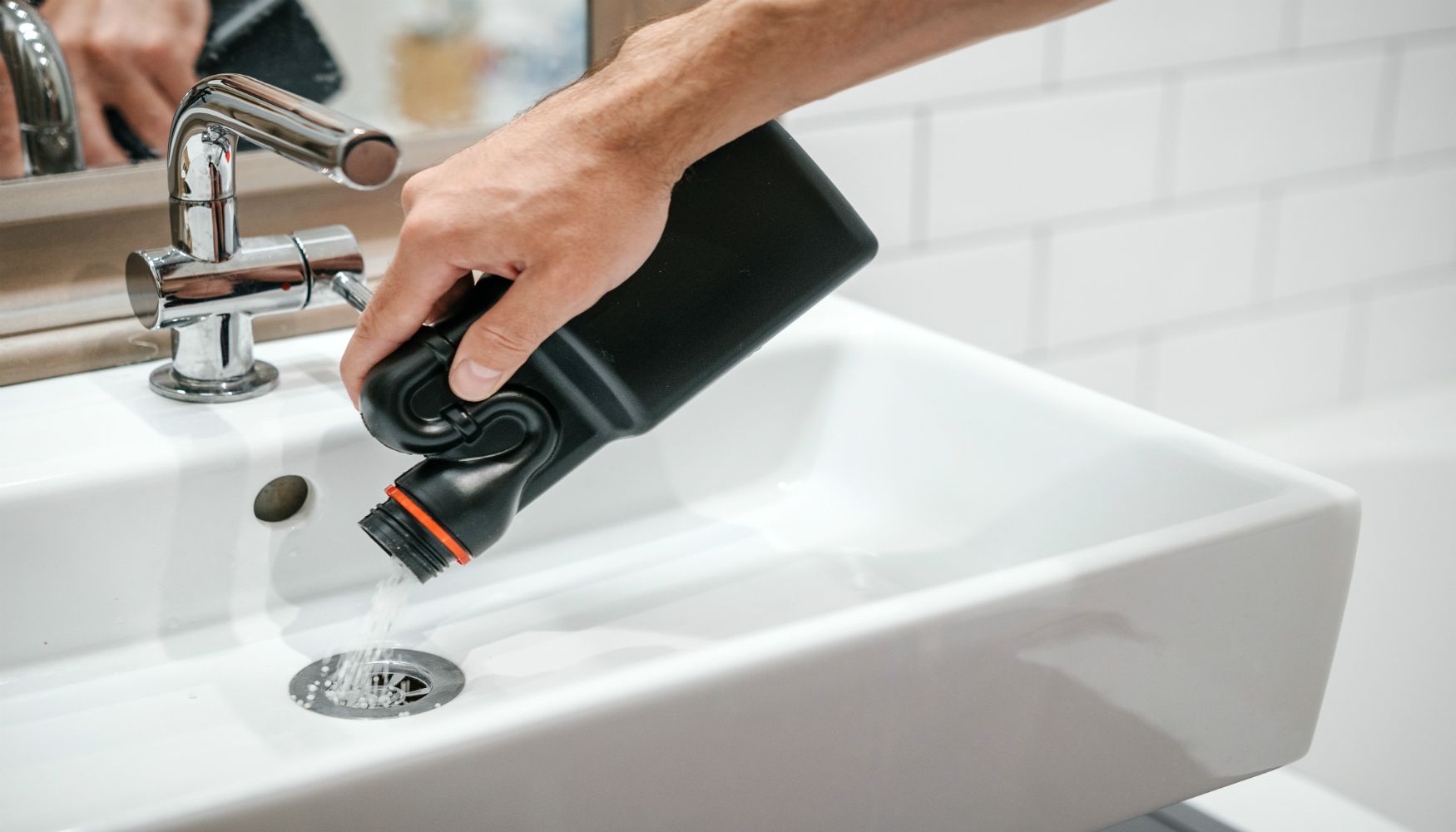


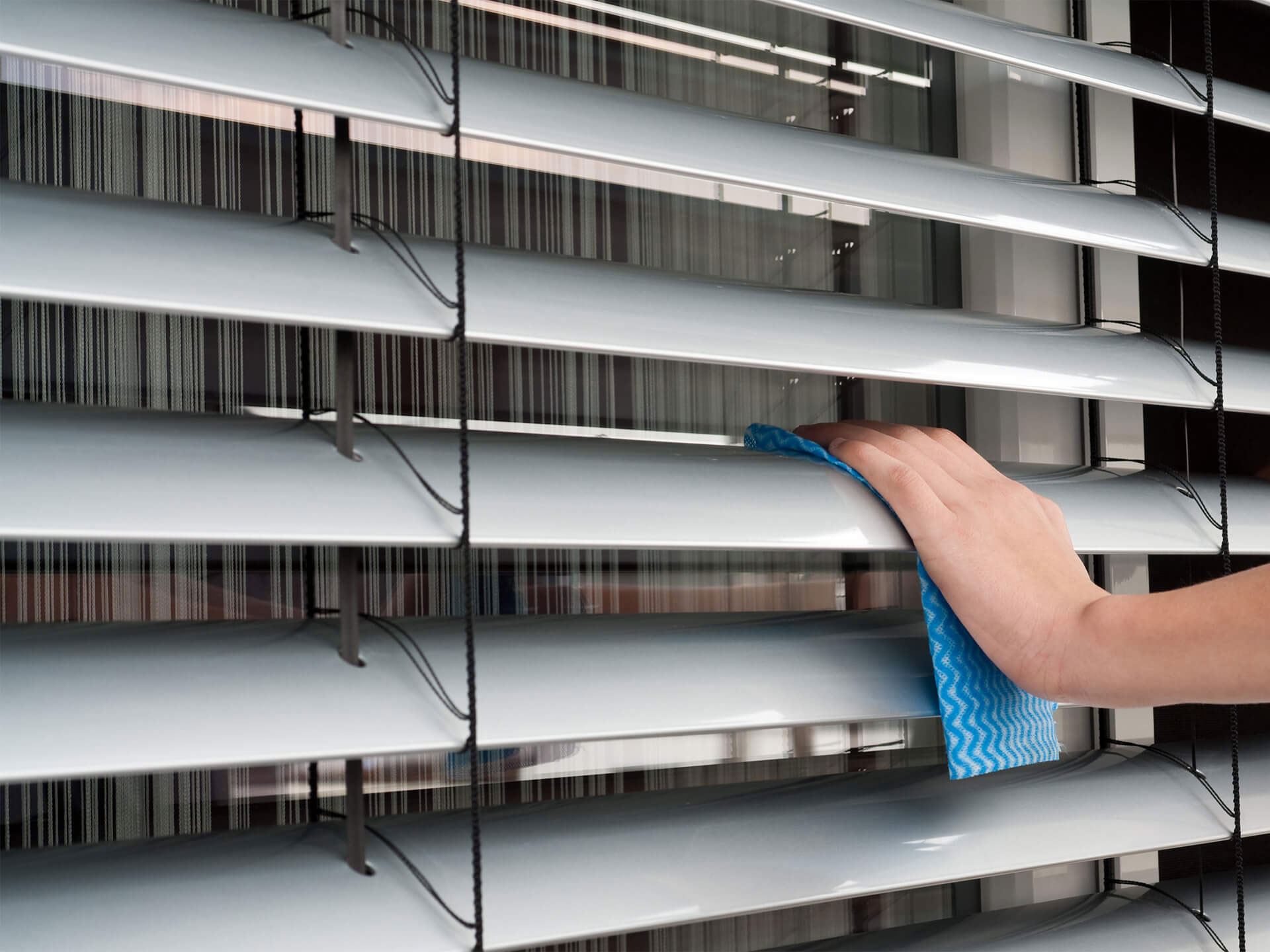
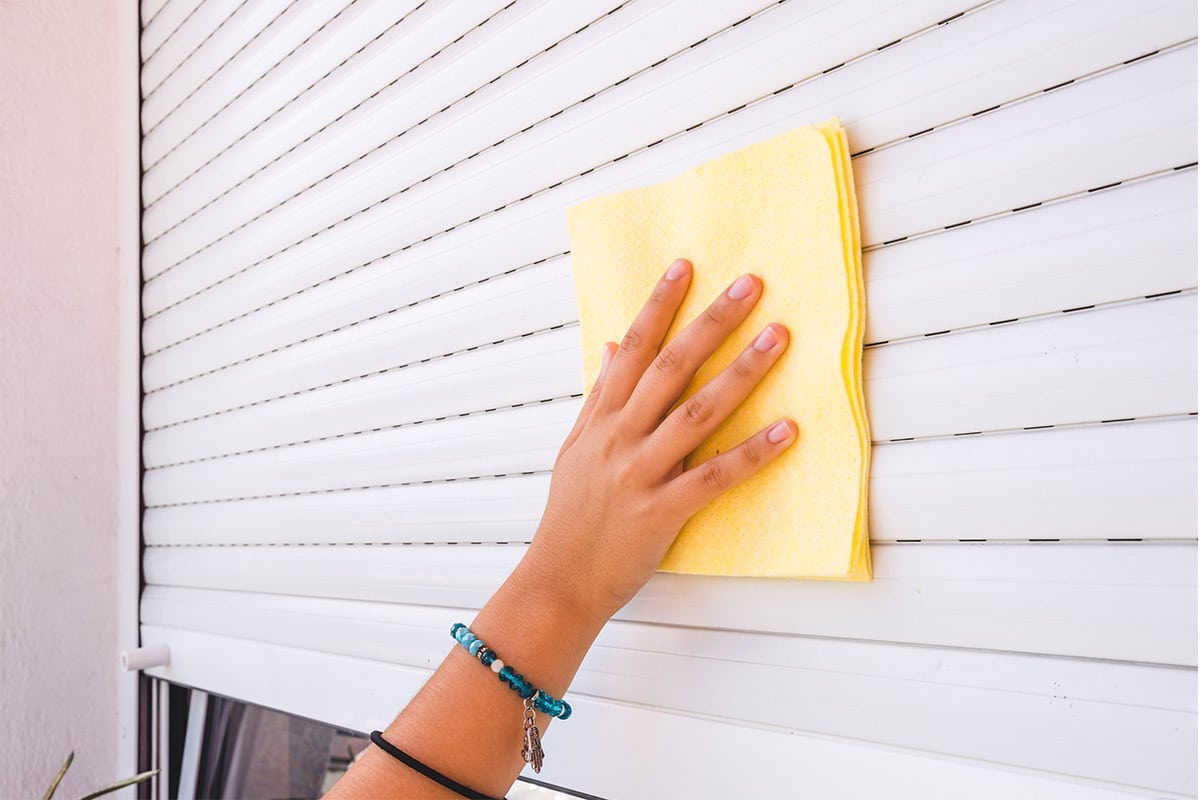
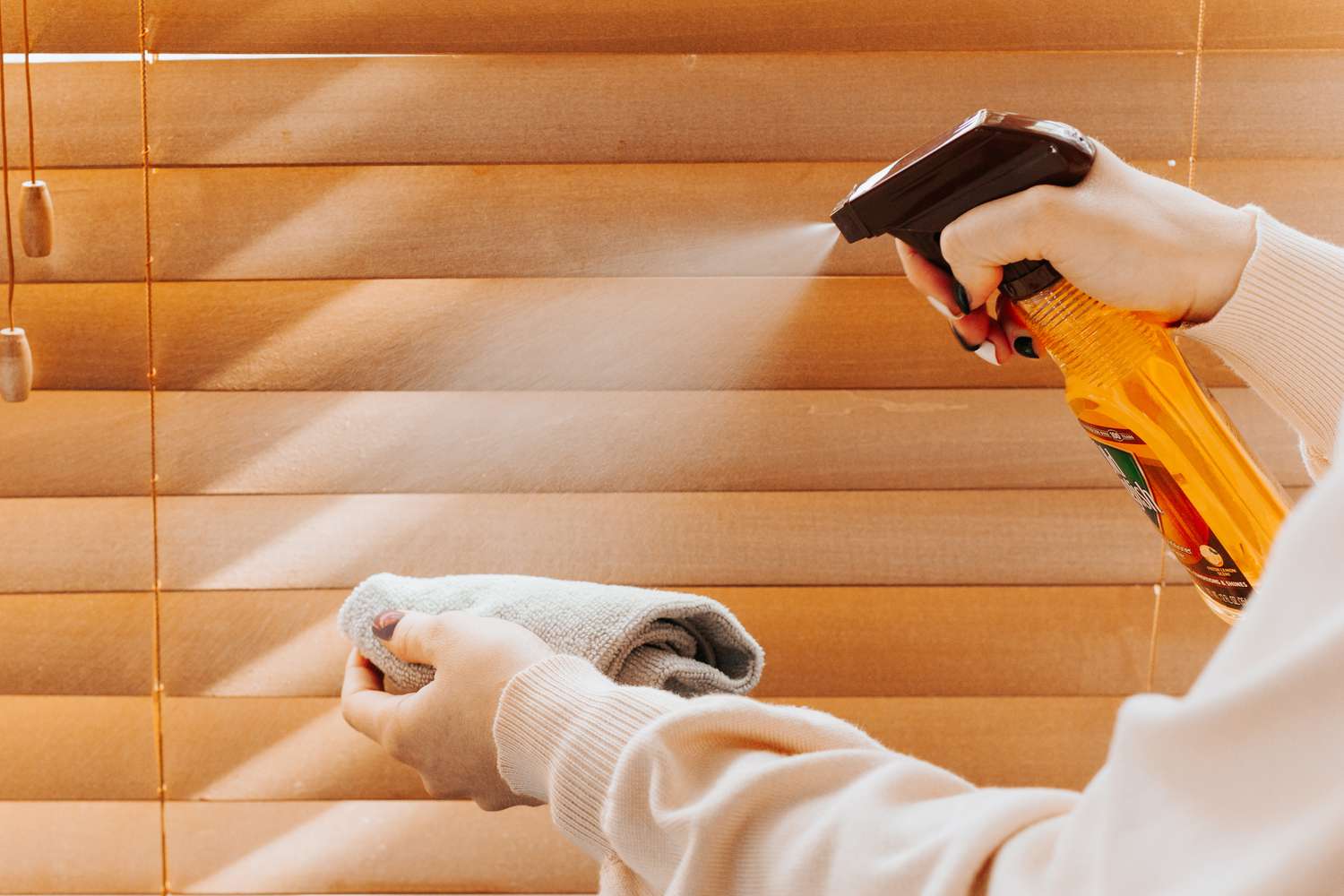
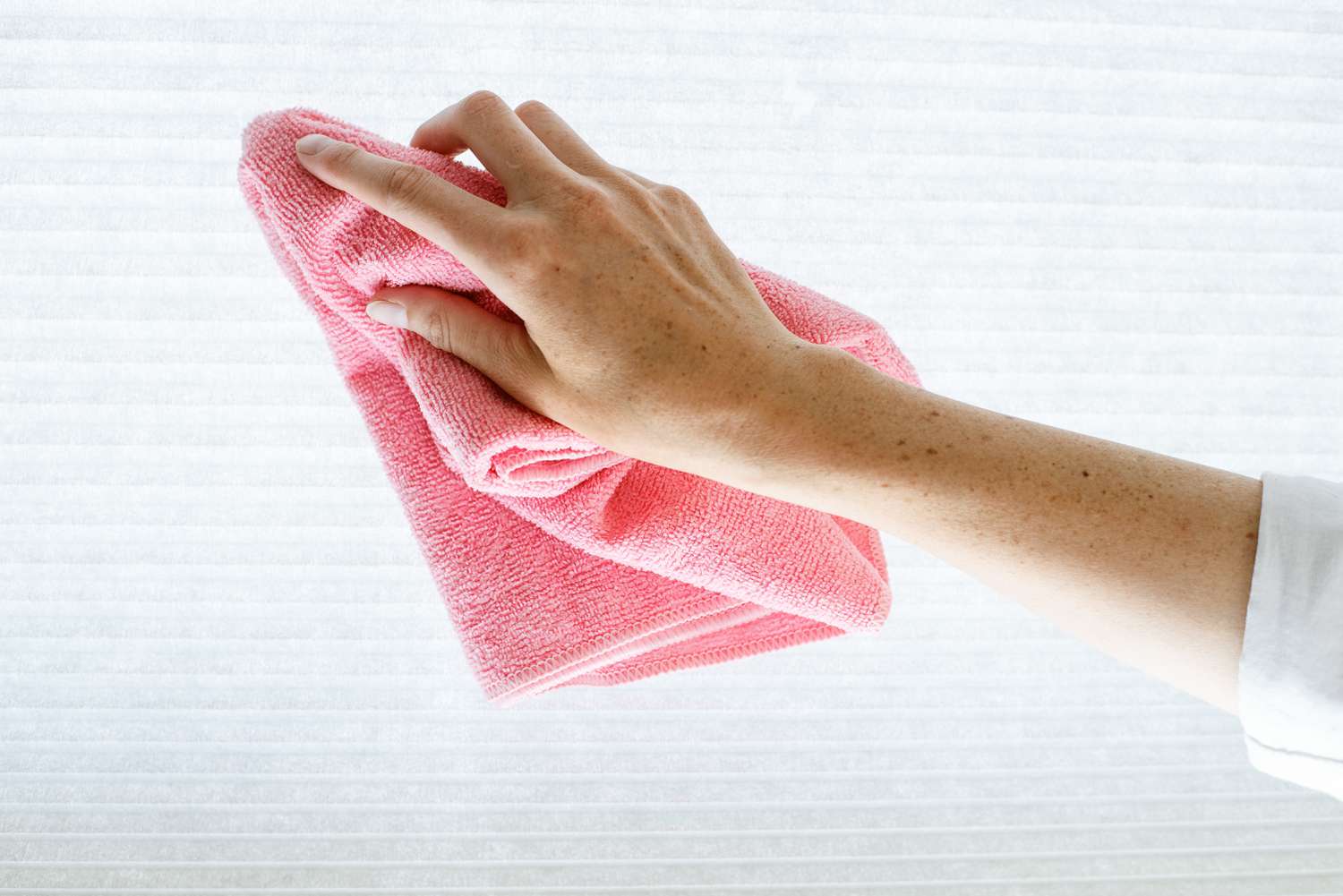



0 thoughts on “How To Clean Blinds: Expert Ways To Make Them Pristine”